
Index
Applications & Benefits of GAO’s RFID, BLE, IoT & Drones for Dam and Water Control Construction
GAO Helps Customers Comply with Standards, Mandates & Regulations of Dam and Water Control Construction
Case Studies of RFID Applications
GAO RFID Systems & Hardware for the Dam and Water Control Construction
GAO Has Served Dam and Water Control Construction Extensively
Overview
Dam and water control construction specializes in the design, construction, and maintenance of dams, reservoirs, and other water control structures. It involves the engineering and construction of large-scale infrastructure projects that regulate water flow, store water for various purposes, generate hydroelectric power, and manage flood risks. This industry plays a vital role in water resource management and sustainable development.
GAO’s RFID, BLE, IoT, and drone technologies have helped its customers in dam and water control construction to improve their work processes, their operations and productivity by better management of their staff, materials and operational equipment such as excavators, bulldozers, cranes, concrete mixers, dump trucks, pile drivers, trenchers, rock drills, dredgers, concrete pumps, compactors, surveying equipment, water pumps, jackhammers, welding equipment.
Ranked as a top 10 global RFID supplier and based in New York City and Toronto, GAO RFID Inc offers a wide choice of RFID (radio frequency identification) readers and tags at ultra-high frequency (UHF), high frequency (HF, including NFC) and low frequency (LF), BLE (Low Energy Bluetooth) gateways and beacons, and various RFID and BLE systems such as people tracking, asset tracking, access control, parking control, fleet management, WIP (work in progress), traceability. Such RFID and BLE products and systems, together with its IoT and drone technologies, have been widely used in dam and water control construction.
Applications & Benefits of GAO’s RFID, BLE, IoT &Drones for Dam and Water Control Construction
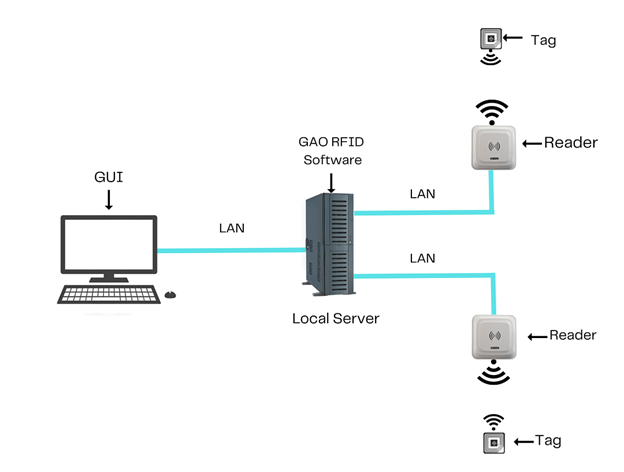 To satisfy its customers, GAO’s RFID or RFID Systems for Dam and Water Control Construction are offered in 2 versions. One version is that its software is running on a local server that normally is on our client’s premise, and another version runs in the cloud. The cloud server could be GAO’s cloud server, client’s own cloud server or a cloud server from one of the leading cloud server providers such as Amazon Web Services (AWS), Microsoft Azure, Google Cloud, IBM Cloud (formerly SoftLayer), Oracle Cloud, RedHat, Heroku, Digital Ocean, CloudFlare, Linode and Rackspace. The above illustrates GAO system for Dam and Water Control Construction with its software running on a local server.
To satisfy its customers, GAO’s RFID or RFID Systems for Dam and Water Control Construction are offered in 2 versions. One version is that its software is running on a local server that normally is on our client’s premise, and another version runs in the cloud. The cloud server could be GAO’s cloud server, client’s own cloud server or a cloud server from one of the leading cloud server providers such as Amazon Web Services (AWS), Microsoft Azure, Google Cloud, IBM Cloud (formerly SoftLayer), Oracle Cloud, RedHat, Heroku, Digital Ocean, CloudFlare, Linode and Rackspace. The above illustrates GAO system for Dam and Water Control Construction with its software running on a local server.
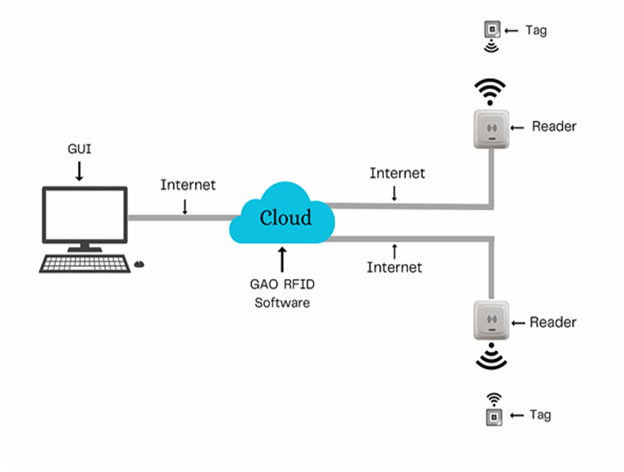
The above illustrates GAO system for dam and water control construction industry with its software running in cloud.
GAO’s RFID and BLE technologies, consisting of RFID readers, RFID tags, BLE gateways, BLE beacons, software, cloud services and their systems, have the following applications in dam and water control construction:
- Asset Tracking: GAO’s RFID tags enable accurate and real-time tracking of equipment, tools, and materials, improving inventory management and project efficiency.
- Enhanced Safety: Our RFID-enabled access control systems can improve security and safety on construction sites.
- Efficient Material Management: GAO’s RFID tags enable easy identification, tracking, and inventory management, reducing manual errors and material waste.
- Workforce Management: Worker tracking, labor allocation optimization, and safety may all be improved by GAO’s RFID tags.
GAO’s drone technologies find the following applications in the dam and water control construction:
- Aerial surveys and mapping: Drones can conduct high-resolution aerial surveys and create accurate 3D maps of dam construction sites. This data helps engineers and project managers in site planning, design, and monitoring progress.
- Site inspections: Drones enable frequent and detailed inspections of dams, including hard-to-reach areas, which helps identify potential structural issues, erosion, or vegetation growth that could impact the dam’s integrity.
- Construction monitoring: Drones provide real-time monitoring during construction, allowing project managers to track progress, identify bottlenecks, and ensure adherence to construction plans and safety standards.
- Material transport: Drones can carry small loads of construction materials to remote or inaccessible areas, reducing the need for manual labor and improving efficiency.
- Environmental impact assessment: Drones aid in conducting environmental surveys to assess the impact of dam construction on surrounding ecosystems and wildlife habitats.
- Safety and security: Drones can enhance site security by monitoring the construction site for unauthorized access or potential safety hazards, reducing the risk of accidents and theft.
- Geotechnical analysis: Drones equipped with specialized sensors can perform geotechnical analysis, such as soil and rock slope stability assessments, which are critical for dam construction.
- Communication and documentation: Drones capture visual data, images, and videos that can be used for communication with stakeholders, project updates, and documentation purposes.
- Precision spraying and erosion control: Drones equipped with spraying systems can apply erosion control measures and vegetation on dam surfaces to prevent erosion and enhance stability.
- Post-construction monitoring: After the dam is completed, drones can continue to be used for ongoing monitoring and maintenance inspections to ensure its long-term structural integrity.
GAO’s IoT technologies, consisting of IoT sensors, sensors networks and systems, find the following applications in the dam and water control construction:
- Remote monitoring: IoT sensors installed throughout the dam and water control infrastructure enable remote monitoring of various parameters such as water levels, flow rates, pressure, temperature, and structural health. This real-time data allows engineers to make informed decisions and respond quickly to any issues or abnormalities.
- Automated dam operation: IoT-based automation systems can control the opening and closing of dam gates and valves based on predefined criteria, such as water levels and weather conditions. This helps optimize water flow and management, improving flood control and water conservation.
- Leak detection: IoT sensors can detect and locate leaks in dam structures or water pipelines promptly. Early detection allows for timely repairs, preventing potential failures or water loss.
- Environmental monitoring: IoT devices can monitor environmental conditions around the dam, such as air quality, noise levels, and wildlife activity. This data aids in assessing the dam’s impact on the surrounding ecosystem and helps in environmental compliance.
- Energy management: IoT can optimize energy usage in water control systems by regulating pumps, gates, and other components based on real-time demand and energy pricing.
- Predictive maintenance: IoT sensors can monitor the health of critical components in the dam, such as turbines and gates, to predict maintenance needs. This proactive approach reduces downtime and extends the lifespan of equipment.
- Safety monitoring: IoT-enabled safety systems can monitor workers’ locations and conditions, ensuring compliance with safety protocols and providing alerts in hazardous situations.
- Water quality monitoring: IoT sensors can continuously monitor water quality parameters like pH, dissolved oxygen, and turbidity. This data is crucial for maintaining water quality standards and ensuring safe water supply downstream.
- Geotechnical monitoring: IoT sensors can monitor the stability of the dam’s foundation and surrounding geological conditions, providing early warning of potential landslides or slope failures.
- Data analytics and decision support: IoT-generated data can be analyzed to gain insights into dam performance, water usage patterns, and potential risks. These insights aid decision-making for better water resource management.
GAO Helps Customers Comply with Standards, Mandates & Regulations of Dam and Water Control Construction
GAO RFID Inc. has helped many companies in dam and water control construction industry to deploy RFID, BLE, IoT and drone systems and to ensure such deployments complying with the applicable industry standards, mandates and government regulations:
RFID, BLE, IoT, &Drone Standards& Mandates
- IEC (International Electrotechnical Commission):
- OGC (Open Geospatial Consortium) standards:
- Zigbee
- ASTM F38 (American Society for Testing and Materials)
- LoRaWAN (Long Range Wide Area Network)
- MQTT (Message Queuing Telemetry Transport)
- FAA Part 107 (Federal Aviation Administration)
- OPC UA (OPC Unified Architecture)
US Government Regulations for Dam and Water Control Construction Industry
- National Dam Safety Program Act (NDSPA)
- Federal Water Pollution Control Act (Clean Water Act)
- National Environmental Policy Act (NEPA)
- Rivers and Harbors Act
- Safe Drinking Water Act (SDWA)
- Dam Safety and Security Act
- National Flood Insurance Act
- Endangered Species Act (ESA)
- National Historic Preservation Act (NHPA)
- Clean Air Act
- Emergency Planning and Community Right-to-Know Act (EPCRA)
- Water Resources Development Act (WRDA)
- Clean Water State Revolving Fund (CWSRF) Program
- Federal Emergency Management Agency (FEMA) Regulations for Floodplain Management
- Army Corps of Engineers Regulations for Dam Construction and Operation
- Occupational Safety and Health Administration (OSHA) Regulations for Worker Safety
- Federal Energy Regulatory Commission (FERC) Regulations for Hydropower Dams
- S. Environmental Protection Agency (EPA) Regulations for Water Quality Management
- Bureau of Reclamation (BOR) Regulations for Dam Construction and Management
- National Pollutant Discharge Elimination System (NPDES) Permitting Requirements
Canadian Government Regulations for Dam and Water Control Construction Industry
- Canadian Environmental Assessment Act (CEAA)
- Fisheries Act
- Navigation Protection Act
- Canadian Environmental Protection Act (CEPA)
- Species at Risk Act (SARA)
- Canadian Navigable Waters Act
- Canadian Environmental Assessment Agency (CEAA) Regulations
- Canadian Environmental Protection Agency (CEPA) Regulations
- Canadian Dam Association (CDA) Guidelines and Manuals
- Canadian Water Quality Guidelines
- Canadian Hydropower Association (CHA) Standards and Best Practices
- Canadian Environmental Quality Guidelines (CCME)
- Canadian Environmental Code of Practice for Hydropower Projects
- Canadian Environmental Sustainability Indicators (CESI)
- Canadian Environmental Standards (CCME)
- Canadian Environmental Protection (CEPA) Environmental Registry
- Canadian Environmental Assessment Registry
- Canadian Environmental Impact Assessment (EIA) Process
- Canadian Environmental Assessment (CEA) Screening
- Canadian Water Act
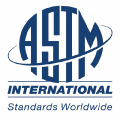
American Society for Testing and Materials
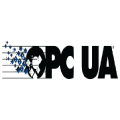
OPC Unified Architecture
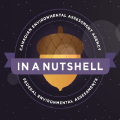
Canadian Environmental Assessment Act

Occupational Health and Safety
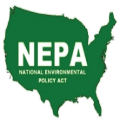
National Environmental Policy Act
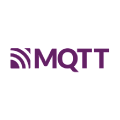
Message Queuing Telemetry Transport
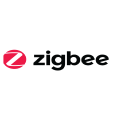
Zigbee
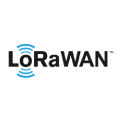
Long Range Wide Area Network
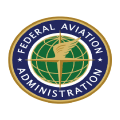
Federal Adviation Administration
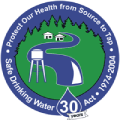
Safe Drinking Water Act

Oen Geopatial Consortium
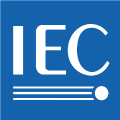
International Electrotechnical Commission
GAO’s Software Provides API
GAO’s RFID and BLE software offers a free trial for both the server-based and cloud versions, and offers an API to the important systems in dam and water control construction industry such as:
Personnel Management:
- Employee Scheduling and Time Tracking
- Training and Development
- Performance Management
- Recruitment and Onboarding
Equipment Management:
- Asset Tracking
- Maintenance and Repairs
- Equipment Inventory Management
- Equipment Allocation and Utilization
Access Control:
- Site Security
- Visitor Management:
- Contractor and Vendor Access
Warehouse Management:
- Inventory Control
- Order Fulfillment
- Material Handling
- Quality Control
Supply Chain Management:
- Vendor Management
- Logistics and Transportation
- Procurement and Purchasing
- Demand Forecasting
Other Applications:
- Safety Management
- Environmental Compliance
- Documentation and Record-Keeping
- Stakeholder Communication
GAO has enabled its customers to make use of some of leading software and cloud services in dam and water control construction industry. Below are some of popular software and cloud services in dam and water control construction industry such as Procore, Viewpoint, Comprehensive construction management software, Autodesk Construction Cloud, Oracle Construction and Engineering Cloud, Microsoft Dynamics 365 for Construction, Trimble Connect, Honeywell Pro-Watch, SAP Warehouse Management, ServiceNow, Amazon Web Services (AWS), Bentley Systems.

Autodesk
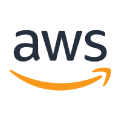
Amazon Web Services
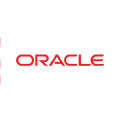
Oracle
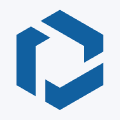
Trimble Connect
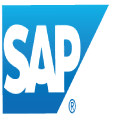
SAP
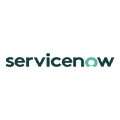
ServiceNow
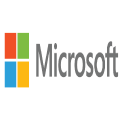
Microsoft
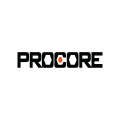
Procore
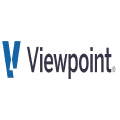
Viewpoint
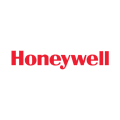
Honeywell
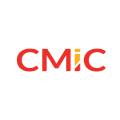
CmiC
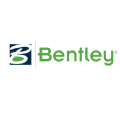
Bentley Systems
GAO has worked with some of the leading technology companies in dam and water control construction industry in to provide integrated its RFID, BLE, IoT and drone solutions to customers. Here are some of the technology leaders in dam and water control construction such as IBM, Siemens, Schneider Electric, ABB, General Electric (GE), Emerson, Rockwell Automation, Google Cloud, Johnson Controls, Mitsubishi Electric, Yokohama Controls Corporation, Tyco.
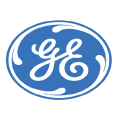
General Electric
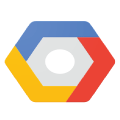
Google Cloud
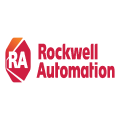
Rockwell Automation
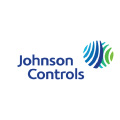
Johnson Controls
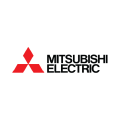
Mitsubishi Electric

Schneider Electric
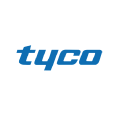
Tyco
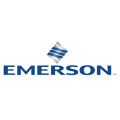
Emerson
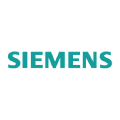
Siemens
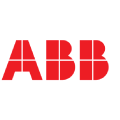
ABB
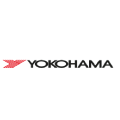
Yokohama Controls Corporation
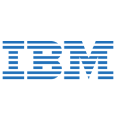
IBM
Case Studies of RFID Applications
Below are some RFID application cases in dam and water control construction industry.
The Los Angeles Department of Water and Power (LADWP) implemented an asset management system using RFID technology for their water and power infrastructure projects. RFID tags were affixed to assets like valves, pumps, and meters, enabling real-time tracking and monitoring during construction. This system significantly enhanced inventory management, maintenance scheduling, and overall project efficiency by providing accurate asset information and streamlining operations.
BC Hydro, a Canadian electric utility company, deployed an RFID-based asset tracking system for their dam and hydroelectric projects. By attaching RFID tags to essential assets like turbines, generators, and transmission equipment, they achieved real-time visibility and monitoring capabilities. This enhanced their maintenance planning, streamlined inventory management, and resulted in improved overall operational efficiency. The RFID system enabled BC Hydro to effectively track and manage their critical assets throughout the construction and operational phases of their projects.
The San Francisco Public Utilities Commission (SFPUC) utilized a UHF RFID-based solution for asset tracking and management in their dam and water control construction projects. Through the use of UHF RFID tags, they were able to track equipment, tools, and materials in real-time, enhancing visibility and improving inventory management. This implementation resulted in increased operational efficiency by reducing manual data entry, mitigating asset loss or misplacement, and enabling precise project costing and resource allocation.
Ontario Power Generation (OPG), a Canadian energy company, leveraged a UHF RFID-based solution for asset tracking and management in their dam and water control construction projects. By employing UHF RFID tags on vital assets like valves, gates, and monitoring equipment, the system enabled real-time visibility, enhanced inventory management, and optimized maintenance planning. As a result, OPG experienced heightened operational efficiency, reduced downtime, and improved resource allocation, contributing to smoother project execution and overall effectiveness.
Many applications of RFID by GAO can be found here:
Case Studies of IoT Applications
The Hoover Dam, one of the most iconic water control structures in the USA, has been equipped with IoT sensors to monitor dam health, water levels, and structural integrity. These sensors provide real-time data, enabling better decision-making and preventive maintenance.
The US Army Corps of Engineers implemented IoT solutions to monitor and control water flow and flood levels in the Center Hill Dam. The system utilizes sensors and data analytics to enhance dam safety and improve flood management in the region.
The SFPUC leveraged IoT technology to monitor and manage water levels and reservoir capacities in the San Francisco Bay Area. The system allows for real-time data access and remote control of water gates and valves for efficient water flow management.
After Hurricane Katrina, the city of New Orleans adopted IoT-based flood monitoring systems to enhance flood protection and early warning capabilities. These systems monitor levees, pumps, and drainage systems, providing critical data to prevent potential flood disasters.
The Oroville Dam, one of the tallest dams in the USA, has implemented IoT sensors and remote monitoring systems to assess dam health, water storage, and structural integrity. This helps prevent potential failures and allows for proactive maintenance
The Bonneville Dam, located on the Columbia River, implemented IoT solutions to monitor fish migration patterns and water levels. The data gathered aids in better management of fish passage and water flow, supporting environmental preservation efforts.
The Site C dam construction project in British Columbia incorporated IoT technologies for various applications, including monitoring dam health, water levels, and environmental conditions. The implementation of IoT sensors and data analytics helped optimize dam operations and improve safety measures.
The Trent-Severn Waterway, a historic water control system in Ontario, adopted IoT-based solutions to monitor water levels, flow rates, and infrastructure health. The real-time data obtained from these sensors assisted in more effective water management and flood control.
Several municipalities in the Greater Toronto Area (GTA) have implemented IoT-based flood monitoring systems to enhance their flood response capabilities. These systems utilize sensors to monitor water levels in rivers and water bodies, allowing for early warnings and better flood control measures.
Some hydroelectric power stations operated by Manitoba Hydro in Canada implemented IoT technologies for remote monitoring of dam infrastructure and water levels. These systems enable real-time data analysis to improve operational efficiency and maintenance planning.
IoT sensors were integrated into the Okanagan Lake Dam to monitor water levels and dam integrity. The data collected from these sensors assists in making informed decisions related to water management and flood control in the region.
The Humber River Watershed in Newfoundland and Labrador has deployed IoT-based weather and water monitoring systems. These systems provide real-time data on weather conditions and water levels, helping in forecasting potential flooding events.
Case Studies of Drone Applications
Drones were used to inspect the Oroville Dam after a spillway failure in 2017. The drones provided high-resolution aerial imagery, which helped engineers assess the extent of the damage, identify potential risks, and plan for necessary repairs.
Drones have been utilized for routine inspections of the Hoover Dam’s infrastructure. The aerial assessments help monitor the dam’s condition, detect signs of wear, and plan for maintenance tasks, all while reducing the need for manual inspections in potentially hazardous areas.
Drones were deployed to conduct an aerial survey and assessment of the Center Hill Dam. The data collected from the drone flights facilitated a comprehensive analysis of the dam’s structural health and potential issues, supporting decision-making for maintenance and rehabilitation.
Drones have been employed to inspect the Glen Canyon Dam and its surroundings, including difficult-to-reach areas. These aerial assessments provide valuable data on dam stability, rock formations, and erosion, contributing to effective management and maintenance strategies.
The HIRE program, led by the U.S. Army Corps of Engineers, incorporates drone technology to conduct high-resolution surveys of dams and reservoirs across various locations in the USA. The program aims to enhance dam safety and optimize inspection practices using drone-based imaging and data analysis.
Drones have been utilized to monitor and assess water levels, spillways, and infrastructure at the Folsom Dam. The data collected helps in real-time decision-making, flood control, and maintenance planning.
Drones have been used in Iowa for flood control and monitoring purposes. The drones provide aerial views of flood-prone areas, enabling authorities to monitor water levels and assess flood damages effectively.
Drones have been used in Alberta to inspect dam infrastructure, including embankments, spillways, and intake structures. The aerial assessments provide visual data that helps engineers evaluate the condition of dams and plan for maintenance or repairs.
Manitoba Hydro, a major energy utility in Canada, has employed drones for monitoring water resources in its hydroelectric power generation areas. Drones assist in gathering data on water levels, ice formation, and river flow, contributing to effective reservoir management and flood control.
Drones have been utilized to monitor water levels, ice conditions, and infrastructure along the Ontario Waterway System, which consists of interconnected lakes and rivers. The data collected helps authorities manage water flow and navigation during various seasons.
In various provinces across Canada, drones equipped with remote sensing technologies have been used for watershed management. These drones capture high-resolution imagery and collect data on soil moisture, vegetation health, and land use, supporting water resource planning and environmental conservation efforts.
Drones have been utilized in British Columbia to study coastal erosion and its impact on water control structures. The aerial surveys provide valuable insights into erosion patterns and help in planning and implementing erosion control measures.
GAO RFID Systems & Hardware for Dam and Water Control Construction
GAO RFID Inc. offers the largest selection of BLE gateways, BLE beacons, RFID readers, tags, antenna, printers, and integrated RFID systems for various industries, including dam and water control construction industry.
BLE (Bluetooth Low Energy)
GAO offers advanced BLE gateways:
as well as versatile beacons with such important functions as temperature, humility, vibration, and panic button:
GAO’s BLE technology is suitable for many industries, including coal mining.
UHF (Ultra High Frequency) RFID
GAO offers the largest selection of UHF RFID readers for various industries, including coal mining:
GAO RFID offers the widest choice of UHF RFID tags, labels, badges, wristbands for various industries, including coal mining:
and an array of antennas to address different applications:
HF (High Frequency), NFC (Near Field Communications) and LF (Low Frequency) RFID
GAO offers the largest selection of HF, NFC, and LF RFID readers for various industries, including coal mining:
HF, NFC and LF RFID tags, labels, badges, wristbands for various industries, including coal mining:
and antennas:
GAO also offers RFID printers:
Digital I/O adapters:
and relay controllers:
For embedded applications, GAO offers UHF, HF and LF RFID reader modules:
- Find Your 860-960 MHz RFID Module
- Find Your 13.56 MHz High Frequency RFID Module
- Find Your 125 kHz RFID Reader Modules
The RFID systems by GAO are highly popular for clients in the coal mining:
Physical asset or operational equipment tracking system:
Assets that can be effectively tracked using GAO’s technologies include:
- Continuous Miners: Continuous miners are large machines used to extract coal from the mining face. They have rotating cutting heads that break up the coal and load it onto a conveyor belt for transport.
- Longwall Shearers: Longwall shearers are advanced machines used in longwall mining, which is a highly efficient method of underground coal extraction. These machines have rotating cutting drums that shave coal from the coal seam, allowing it to be collected and transported away.
- Roof Bolters: Roof bolters are specialized machines used to install roof support bolts in underground coal mines. They ensure the stability and safety of the mine by securing the roof and preventing collapses.
- Shuttle Cars: Shuttle cars, also known as shuttle cars or coal haulers, are used to transport coal from the mining face to the conveyor belt or storage area. They are designed to navigate the narrow underground tunnels and carry large volumes of coal.
- Conveyor Systems: Conveyor systems are essential in coal mining operations for efficient transportation of coal. These systems consist of belts and pulleys that move coal from one location to another, such as from the mining face to the processing plant or storage area.
- Draglines: Draglines are large excavating machines used in surface mining to remove overburden and expose coal seams. They have a long boom with a bucket that can dig and remove massive amounts of soil and rock.
People or workers tracking system:
Physical asset or operational equipment tracking system:
Personnel or people access control system:
Parking or vehicle control system:
GAO Has Served Dam and Water Control Construction Extensively
GAO’s products and technologies have helped its customers in dam and water control construction industry to achieve success in sustainable infrastructure, resilience and adaptation, digitalization and automation, internet of things (IoT), big data and analytics, remote sensing and geospatial technologies, modular and prefabricated construction, risk management and disaster preparedness, stakeholder engagement and social impact, circular economy, green infrastructure, 3D printing and additive manufacturing.
GAO RFID Inc. has served many customers in dam and water control construction industry including its various divisions such as
- Dam Construction: Construction of dams involves excavation, foundation preparation, materials, and structural construction.
- Hydropower Generation: Construction of hydropower plants involves installing turbines, generators, transformers, and other equipment for electricity generation.
- Water Supply and Distribution: The sub-industry is responsible for the construction of water supply systems, pipelines, canals, and distribution networks associated with dam projects.
- Flood Control and Water Management: Construction of infrastructure to manage and control water flow, such as flood control channels, levees, flood barriers, and water diversion structures.
- Irrigation Systems: Construction of irrigation canals, channels, and networks to distribute water for agricultural purposes.
- Water Resource Management: This division focuses on the planning, design, and construction of water resource management systems, including water monitoring, quality management, and conservation measures.
- Environmental Restoration and Fish Passage: Construction of fish ladders, fishways, and other structures to facilitate fish migration and support ecological restoration.
- Dam Safety and Maintenance: The division is responsible for ensuring the safety and structural integrity of dams through inspections, maintenance, and repair.
- Geotechnical and Hydraulic Engineering: The sub-industry provides engineering services related to soil analysis, slope stability, foundation design, hydraulic modeling, and dam construction.
- Dam Decommissioning and Removal: Decommissioning and removing old dams to restore natural river systems and ecosystems.
Here are some of the leading companies in dam and water control construction industry:
- AECOM (New York, NY): A multinational engineering firm offering expertise in dam and water control construction, including design, construction, and rehabilitation of dams, reservoirs, and water control structures.
- HDR, Inc. (Omaha, NE): A global architecture, engineering, and consulting firm known for water resources and dam engineering projects, including dam construction, rehabilitation, risk assessments, and hydraulic modeling.
- Black & Veatch (Overland Park, KS): A leading engineering and construction company with extensive experience in the water infrastructure sector, providing dam design, construction, and safety evaluations.
- Stantec (Edmonton, AB, Canada): A global consulting firm with a strong presence in dam engineering and water resources management, offering services in dam design, hydrology, risk assessment, and environmental compliance.
- Gannett Fleming, Inc. (Harrisburg, PA): A multidisciplinary engineering firm providing services in water infrastructure, including dam design, dam safety evaluations, and construction management for water control projects.
- Schnabel Engineering (Glen Allen, VA): A geotechnical and dam engineering consulting firm specializing in dam design, dam safety inspections, and geotechnical investigations for water control projects.
- Kleinfelder (San Diego, CA): An engineering, construction management, and environmental consulting firm offering expertise in dam design, rehabilitation, and safety evaluations.
- CHA Consulting, Inc. (Albany, NY): Providing engineering and construction management services, including dam design, inspections, and rehabilitation for water control structures.
- EA Engineering, Science, and Technology, Inc. (Hunt Valley, MD): An environmental consulting and engineering firm with experience in water resources and dam engineering, offering services in dam safety evaluations, water quality assessments, and environmental compliance.
- Arcadis (Highlands Ranch, CO): A global consulting firm providing services in water and environmental projects, including dam engineering, dam safety evaluations, and hydraulic modeling.
- Kiewit Corporation (Omaha, NE): A construction and engineering company known for its expertise in heavy civil projects, including dam construction and water control infrastructure.
- Barnard Construction Company, Inc. (Bozeman, MT): Specializing in dam construction, rehabilitation, and water resources projects, with experience in building earthfill, concrete, and rockfill dams.
- MWH Constructors (Broomfield, CO): A subsidiary of Stantec, offering construction and engineering services in water infrastructure, including dam construction, flood control, and water resource projects.
- Flatiron Construction Corp. (Broomfield, CO): A heavy civil infrastructure construction company with experience in dam construction and water control projects in the western states.
- McMillen Jacobs Associates (San Francisco, CA): A multidisciplinary engineering and construction firm with expertise in dam engineering, tunneling, and water resources projects.
- GHD Group (Santa Rosa, CA): A global consulting firm with a presence in water resources engineering and dam construction, offering services in dam design, safety evaluations, and water management projects.
- APTIM (The Woodlands, TX): Providing engineering and construction services, including dam and water control infrastructure projects in the western U.S., with experience in dam design, rehabilitation, and environmental assessments.
- GEI Consultants, Inc. (Woburn, MA): An engineering and environmental consulting firm with expertise in dam engineering, water resources, and hydrology projects in the western region.
- AMEC Foster Wheeler (now part of Wood plc) (Houston, TX): Offering engineering, consulting, and project management services in water infrastructure, including dam engineering and water control projects in the western U.S.
- Parsons Corporation (Centreville, VA): Providing engineering and construction services, including dam safety evaluations and water resource projects in the western states.
- SNC-Lavalin Group Inc. (Montreal, Quebec): A global engineering and construction company with expertise in dam and water control projects. They offer services in dam design, construction, rehabilitation, and water resource management.
- WSP Global Inc. (Montreal, Quebec): A consulting firm providing engineering and environmental services, including dam engineering, water resources management, and hydraulic modeling.
- Klohn Crippen Berger (Vancouver, British Columbia): A geotechnical engineering and environmental consulting firm with extensive experience in dam design, safety evaluations, and water control projects.
- Stantec (Edmonton, Alberta): A global consulting firm with a strong presence in dam engineering and water resources management. They offer comprehensive services in dam design, hydrology, risk assessment, and environmental compliance.
- AMEC Foster Wheeler (now part of Wood plc) (Calgary, Alberta): Offering engineering, consulting, and project management services in water infrastructure, including dam engineering and water control projects.
- Morrison Hershfield (Vancouver, British Columbia): An engineering and management consulting firm with expertise in dam safety evaluations, water resources management, and dam rehabilitation.
- Tetra Tech Canada Inc. (Vancouver, British Columbia): A consulting and engineering company involved in dam and water control projects, including design, construction, and environmental assessments.
- Golder Associates Ltd. (Mississauga, Ontario): An environmental and geotechnical consulting firm offering services in dam engineering, dam safety evaluations, and water resources management.
- Hatch Ltd. (Mississauga, Ontario): A multidisciplinary engineering and consulting company with experience in water infrastructure projects, including dam construction and rehabilitation.
- Klohn Crippen Berger (Vancouver, British Columbia): A geotechnical engineering and environmental consulting firm specializing in dam design, safety inspections, and water control projects.
- Knight Piésold Ltd. (Vancouver, British Columbia): An engineering consulting firm with expertise in dam design, safety evaluations, and water resources management.
- Northwest Hydraulic Consultants (North Vancouver, British Columbia): An engineering consulting firm providing services in water resources management, including dam safety assessments and hydrological studies.
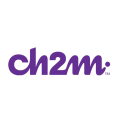
CH2m
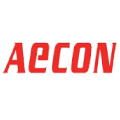
Aecon Group Incorporated
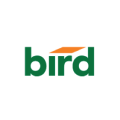
Bird Construction Incorporated
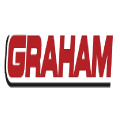
Graham Construction
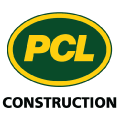
PCL Construction
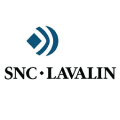
SNC Lavalin Group Incorporated
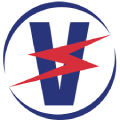
Valard Construction
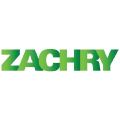
Zachry Group
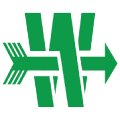
Walsh Group
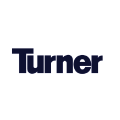
Turner Construction Company
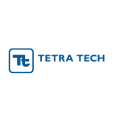
Tetra Tech
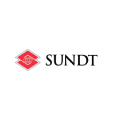
Sundt Construction
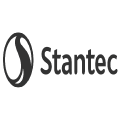
Stantec

Bechtel Corporation

Skanska USA

Parsons Corporation
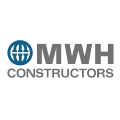
MWH Constructors
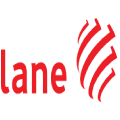
Lane Construction Corporation
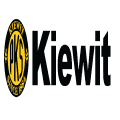
Kiewit Corporation
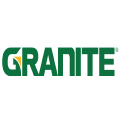
Granite Corporation
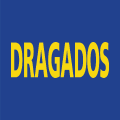
Dragados USA

Black and Veatch
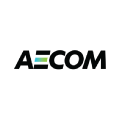
AECOM
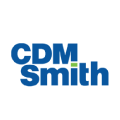
CDM Smith
